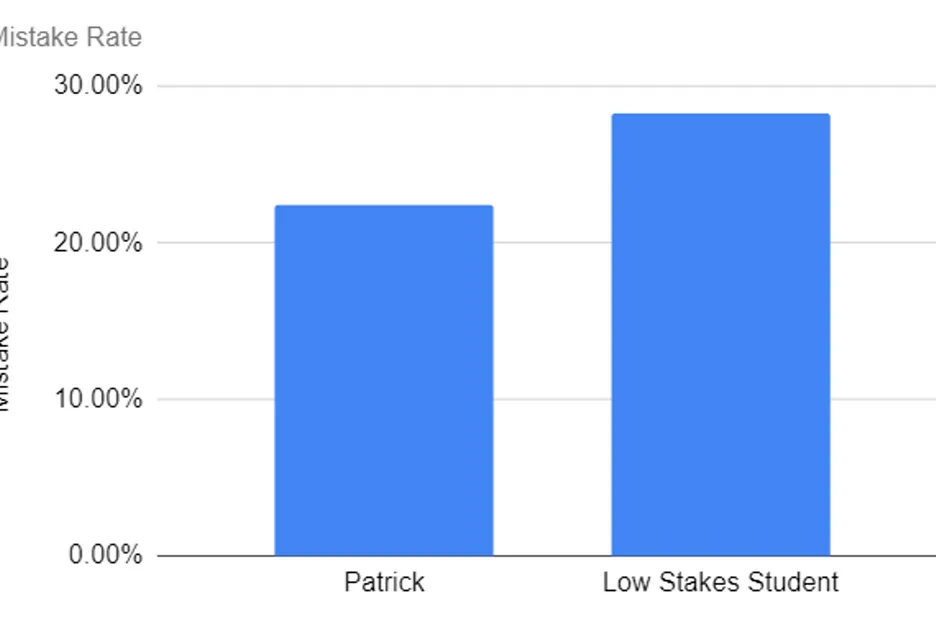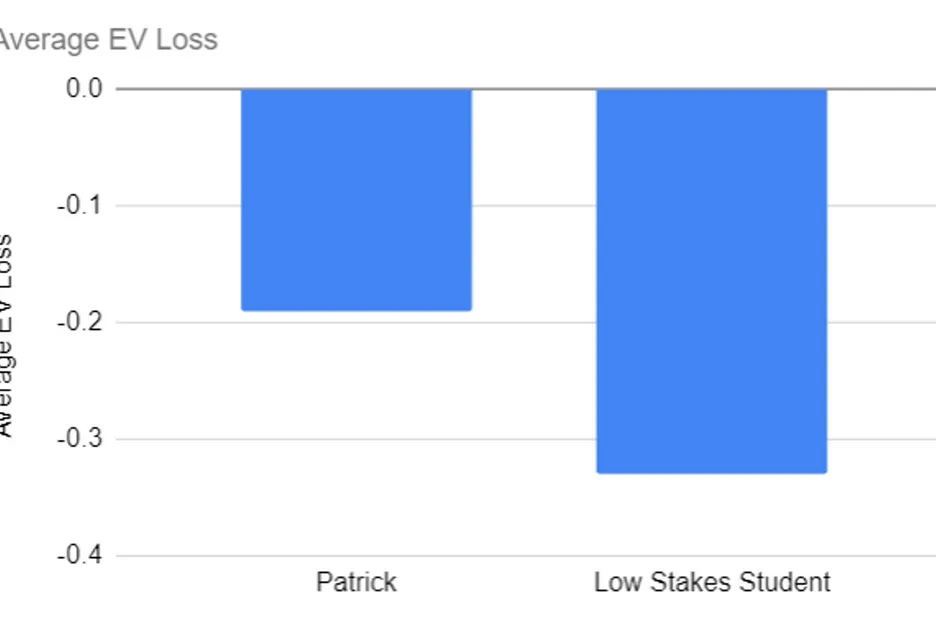Patrick Gerritsen is a professional player and coach at Run It Once, where he specializes in cash game strategy under the nickname ‘Freenachos’. This week he looks at three common reasons players get stuck at the low stakes, unable to progress...
When it comes to poker, moving up the stakes is a common goal for many players. However, countless individuals find themselves stuck at the low stakes tables, unable to make progress.
Here are three key reasons why you might be one of those players and what you can do to overcome these obstacles.
#1 - You’re missing a structured study approach
After doing hundreds of coaching calls, I’ve become quite good at spotting which students are going to be successful and which ones are not. If I had to distill it down to one word: preparation.
With all the tools we have at our disposal, poker is increasingly becoming a game where the best-prepared player ends up winning. One of the most significant reasons players remain at low stakes is the absence of a structured study approach. Poker is a game of skill, strategy, and continuous learning. Without a well-defined study plan, players often fail to develop the necessary skills to outplay their opponents consistently.
Last week I ran two databases through GTO Wizard, one of a player playing low stakes and one of myself. Both databases were filtered for hands where the hero folded the flop to a bet. These were the results:
The charts show that the low stakes player makes more frequent over-folding mistakes (fig.1) and the average mistake is significantly larger (fig.2). These unforced errors are easily preventable with proper preparation. Spending hours in the lab, drilling in GTO trainers and reviewing your game will get these numbers down. It’s just a matter of crafting the discipline to do so.
#2 - You underestimate the importance of table selection
Another common mistake that keeps players stuck at low stakes is poor table selection. Many players underestimate the importance of choosing the right spots. In a high-rake environment, which low stakes poker inherently is, having one or two recreational players at your table is essential. Without them, even the best players would struggle to turn a profit.
Data from the high stakes players in our program (fig.3, below) highlights the importance of table selection. Without any recreational players, our players have a win rate of 1.8 BB/100. When there is one recreational player, the win rate jumps to 5.6 BB/100. With two or more recreational players, the win rate soars to 11.2 BB/100.
It’s important to note that at high stakes, the rake is relatively low. If I performed the same experiment at low stakes, our players would likely lose money on tables without recreational players.
It’s always important not to take an overly predatory approach. Staying for a few orbits when the recreational player has left the table won’t have a dramatic effect on your immediate results, but being aware of the importance of table selection is crucial.
Regularly evaluate your tables and be ready to move to better ones when necessary. This awareness and flexibility can significantly boost your win rate and can be the difference between consistently moving up and staying stuck.
#3 - The inconsistency trap
Players need just two things to succeed: a good plan and consistent execution.
In poker, where the results often don’t align with the quality of your decisions, it can be very tempting to second-guess yourself and change strategies. Whether grinding your sessions or your overall approach to poker, adopting a more stoic mindset can profoundly affect anyone's game. When you lack consistency, it's challenging to maintain and build upon your poker skills, resulting in stagnation at low stakes.
To break free from this trap, establish a regular playing schedule that fits your lifestyle. Treat your poker sessions with the same seriousness as any other important task. Beyond that, it’s just rinse and repeat. It’s that simple. There is always room to recalibrate a bit here and there, but when you want to be successful in a game like poker, where chaos often erupts daily, having a consistent approach is your only real antidote. The great thing is that this is something, as with any other skill, that can be trained and improved upon if you actively work on it.
Start by keeping a poker journal to track your progress and reflect on your sessions. This will help you identify areas for improvement and ensure you stay on track. By maintaining consistency in your play and mindset, you'll be able to refine your skills steadily, avoid unnecessary mistakes, and make the necessary adjustments to move up the stakes. Remember, success in poker is a marathon, not a sprint. Stay disciplined, stay focused, and the results will follow.
A recipe for success
Staying at low stakes longer than desired is a common challenge in the poker world. However, by addressing these three key areas - adopting a structured study approach, prioritizing table selection, and maintaining consistency - you can overcome the barriers that are holding you back.
Remember, progress in poker requires dedication, discipline, and continuous improvement. Implement these strategies, and you'll find yourself climbing the stakes ladder more quickly than you might have thought possible.
Patrick Gerritsen is a successful online player and a coach at Run It Once, as well as the founder of the NachosPoker training site. He specializes in cash games, combining solid fundamentals with data analysis.
Feature image courtesy of Wes Hicks/Unsplash





















